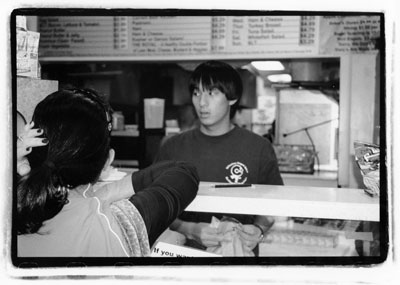All Nonfiction
- Bullying
- Books
- Academic
- Author Interviews
- Celebrity interviews
- College Articles
- College Essays
- Educator of the Year
- Heroes
- Interviews
- Memoir
- Personal Experience
- Sports
- Travel & Culture
All Opinions
- Bullying
- Current Events / Politics
- Discrimination
- Drugs / Alcohol / Smoking
- Entertainment / Celebrities
- Environment
- Love / Relationships
- Movies / Music / TV
- Pop Culture / Trends
- School / College
- Social Issues / Civics
- Spirituality / Religion
- Sports / Hobbies
All Hot Topics
- Bullying
- Community Service
- Environment
- Health
- Letters to the Editor
- Pride & Prejudice
- What Matters
- Back
Summer Guide
- Program Links
- Program Reviews
- Back
College Guide
- College Links
- College Reviews
- College Essays
- College Articles
- Back
America's Fast Food Obsession
Everywhere one looks in America, there is a fast food restaurant. Globally, names such as McDonald’s, Burger King, and Wendy’s have become recognisable. On every street corner, within walking distance from most schools, and with the added bonus of a drive-thru, fast food has become both a constant and an epidemic in America alone. And, with the rise of these food giants, obesity rates and health risks have made themselves known. From hundreds of studies, it has been proven that there is a direct correlation between fast food restaurants and obesity, among other health problems. So, should establishments such as McDonald’s be held accountable for these issues? The answer, though complicated, is an affirmative.
Let us first look at the main source of expenditure and income for these restaurants: advertising. It is impossible nowadays to turn on the television and watch a show or a movie without once seeing a fast food commercial-- sometimes, even twice or three times. Fast food companies spend the most money on planning, filming, and publishing these advertisements for all to see. How many times have you been watching a commercial for, say, a cheeseburger from Burger King, and suddenly you find yourself craving one? This is called the power of suggestion.
Fast food restaurants manipulate their advertisements so well and appeal to the viewer’s senses so accurately, that even the sight of their food gets mouths watering.
Now, we all know that the ads we see on television are not entirely truthful. No one has ever received chicken nuggets that look as crisp and golden as they do on the telly, and lettuce is never as green in person as it is on the screen. This not-outright-lying but skirting-around-the-negatives form of advertising draws in customers, it hooks them at a crucial target age and holds onto them for life. This is what the companies are trying to accomplish-- they know that their food is not the healthiest, but, if it looks pretty enough, prospective regulars will come pouring in through the doors.
Said ‘prospective regulars’ often look up at the menu and see words such as burger, fries, and ice cream. Farther off to the side, most often forgotten, a few customers see salad, baked potato, and apples. But, how often do people order the healthier option when the tastier, greasier, more popular ones are glaring them right in the face? Advertisements for burgers and fries far outweigh those of salads and fruit. While, yes, people have the ability to choose what they eat, fast food restaurants are responsible for making it known that other options, healthier options, are available to eat. If it were more widely known that salads and baked potatoes existed in some fast food chains, a larger portion of the fast-food-eating population would order such meals.
However, blaming advertising and menu space can only stretch so far in the fight against fast food and obesity. It is the ingredients that make up said food, that is causing the main problems. Most foods in these restaurant chains are full of fat and grease and salt, all of which can become addicting. It is understood that these cheaper ingredients are, in fact, cheaper and are cost-effective for customers. But, a slightly more expensive but healthier menu would rank supreme over the inexpensive and greasy one that occupies most fast food restaurants today. There have been instances and studies to show that people would eat healthier food if given the opportunity. It is possible to make food that would still be within budget but poses less health risks.
Chef Jamie Cook created such a movement called the Food Revolution. He traveled to diner and fast food restaurants and altered their menus with healthier, fresher ingredients and tons of less grease. People still came and ate, but it was better for them and the companies even received more money. Fast food restaurants have such a hold over America, that they are responsible for what they put in their food because, the way it is now, the ingredients are causing heart disease, risk of diabetes, and, most prevalently, obesity.
From McDonald’s to Wendy’s fast food restaurants are taking over America with their convenience and addictive food. But, is fast really worth it? These restaurants should put more work into healthier options, as they are accountable for much of the obesity in America, and make it known that said options exist. Obesity is a serious problem and, with the way that things are now, it may never change if fast food companies themselves do not change. The correlation between fast food and obesity and other health issues has been proven, now it is time to make it known.

Similar Articles
JOIN THE DISCUSSION
This article has 0 comments.
